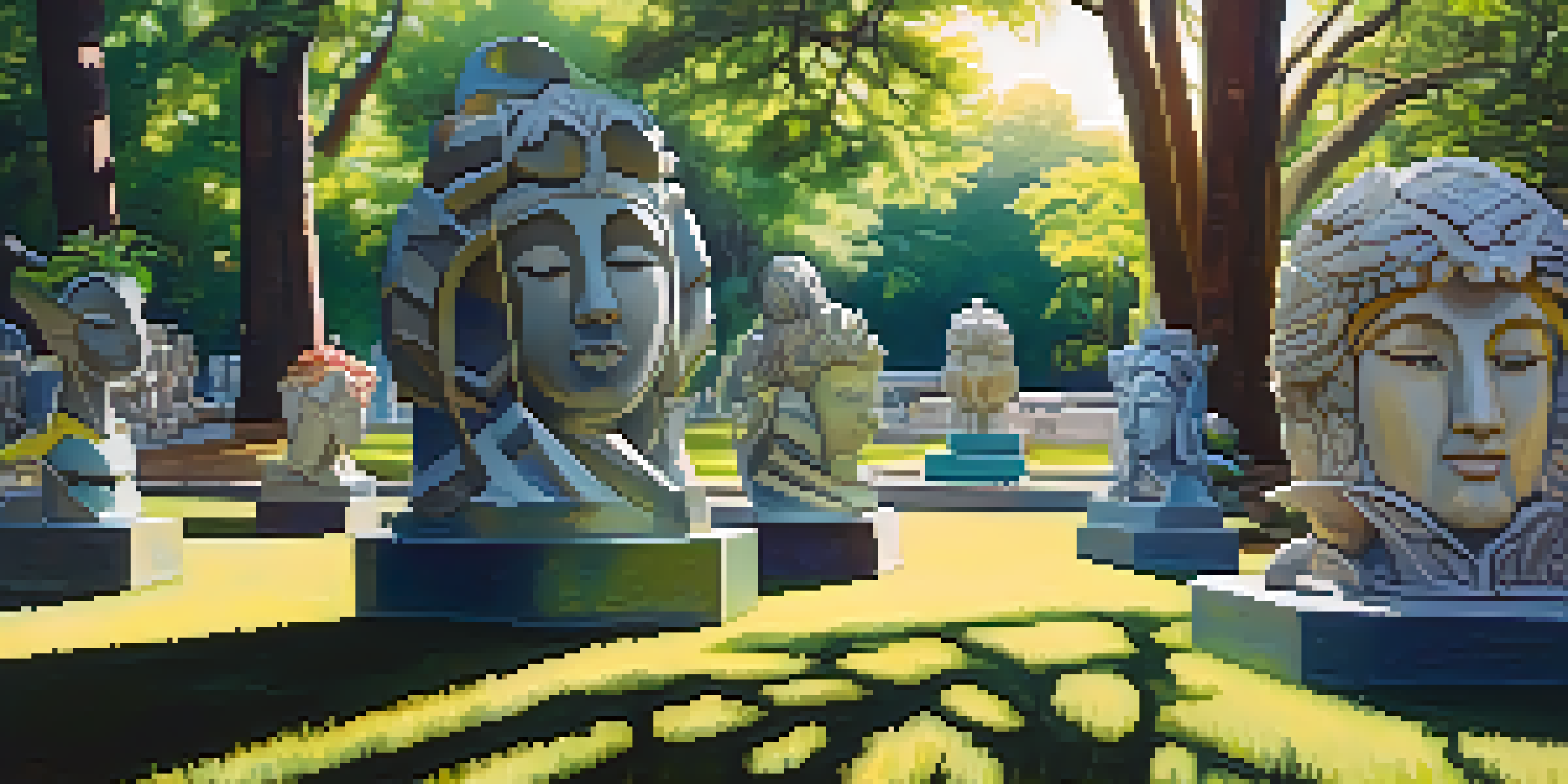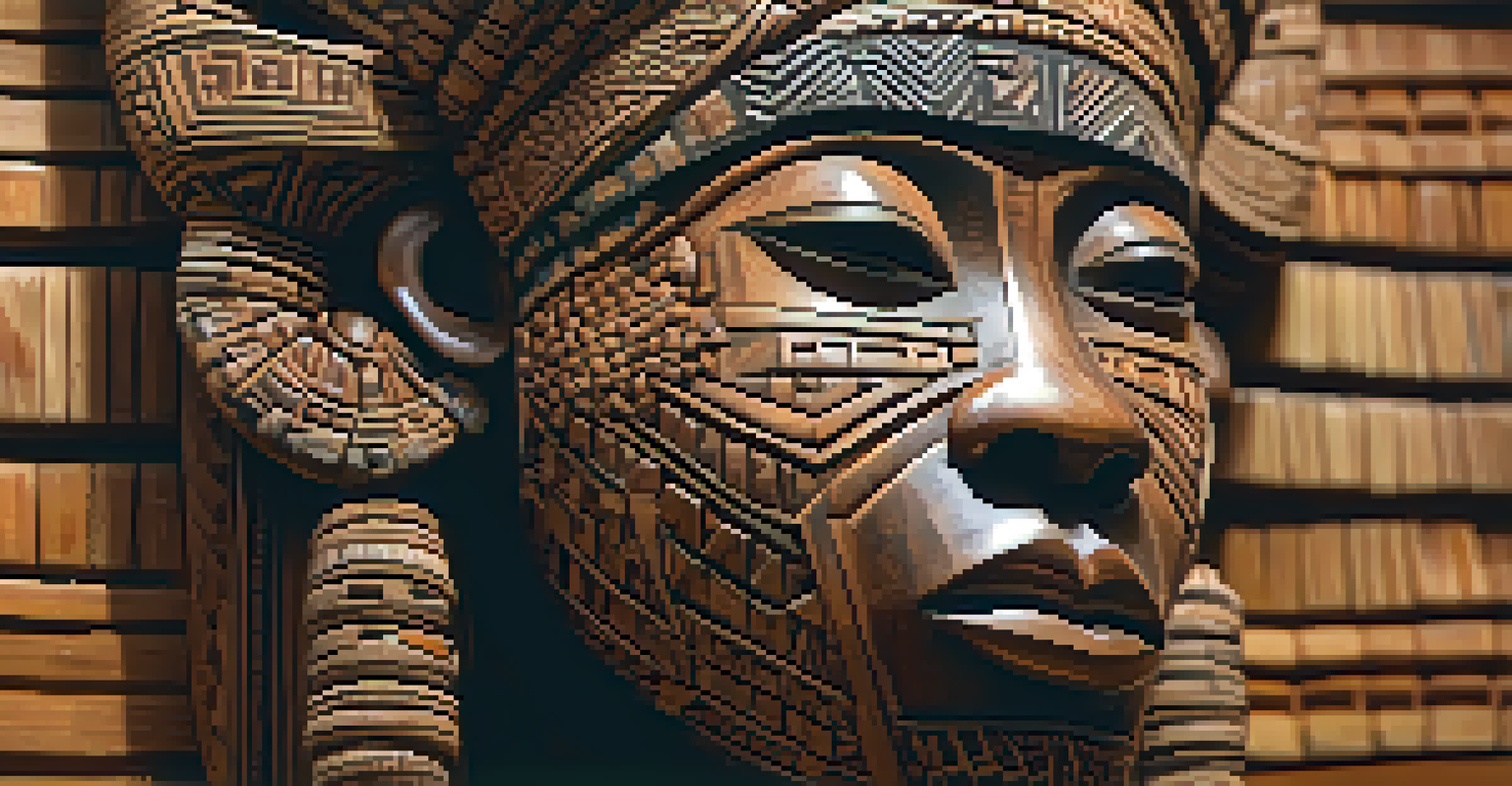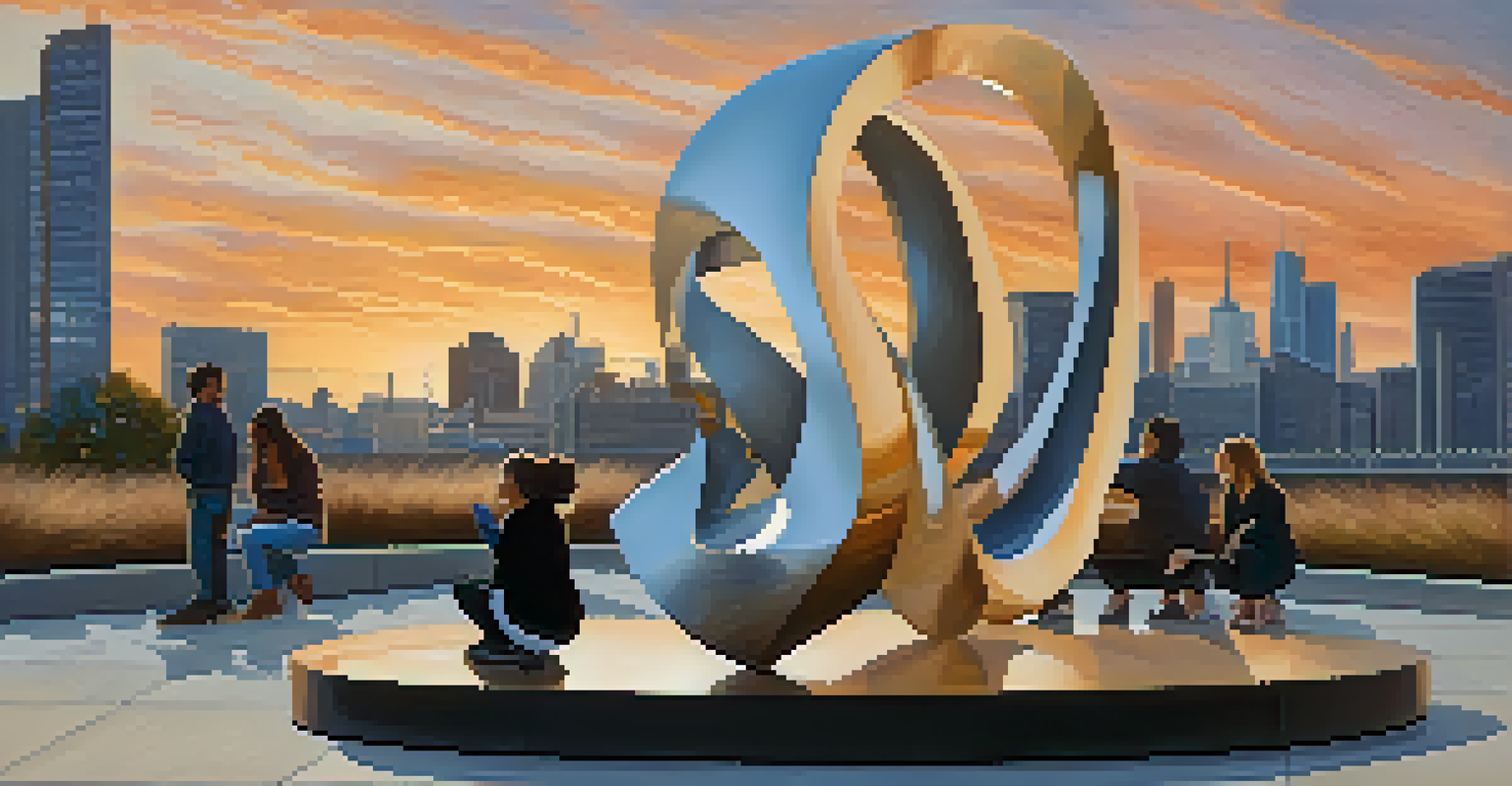Cultural Influences on Sculpture vs. Carving Techniques Today

Historical Overview of Sculpture and Carving Techniques
Sculpture and carving have deep historical roots, dating back to ancient civilizations. From the grand marble statues of the Greeks to the intricate wood carvings of African tribes, these art forms reflect the values and beliefs of their time. Each culture brought its unique perspective, shaping the materials and techniques used. Understanding this history gives context to how and why sculpture has evolved over the centuries.
Art is not what you see, but what you make others see.
In many early cultures, sculptures were often used for religious purposes or to commemorate significant events. For instance, the towering Easter Island Moai statues showcase the Rapa Nui people's connection to their ancestors. Similarly, ancient Egyptian sculptures were not just art; they were a means of ensuring a safe passage to the afterlife for the pharaohs. These examples highlight how cultural significance has continually influenced artistic expression in sculpture.
Today, while we see a fusion of ideas in modern sculpture, the influence of historical techniques persists. Artists often draw inspiration from ancient methods, merging them with contemporary themes. This blend allows modern sculptures to speak to both historical reverence and current societal issues, creating a dialogue across time.
Cultural Identity in Modern Sculpture
Cultural identity plays a pivotal role in shaping modern sculpture. Artists today often use their work to express their cultural heritage, addressing themes of identity, belonging, and social justice. For instance, sculptors from diverse backgrounds might incorporate traditional patterns or materials that resonate with their cultural narratives, enriching the artwork's depth and meaning.

An excellent example is found in the work of contemporary artists like El Anatsui, who uses discarded materials to create intricate sculptures reflecting African history and identity. His pieces not only showcase artistic mastery but also comment on consumerism and cultural legacy. Such works serve as a bridge, connecting viewers to the artist's cultural context and offering insights into their experiences.
Historical Roots of Sculpture
Sculpture has evolved from ancient civilizations, reflecting cultural values and beliefs through various materials and techniques.
This emphasis on cultural identity in sculpture fosters a greater appreciation for diversity. It encourages a dialogue about the varied experiences and histories that shape our world today. As artists continue to explore their roots, they also invite audiences to reflect on their own cultural narratives, fostering a richer understanding of shared humanity.
Influence of Technology on Sculpture Techniques
The advent of technology has profoundly transformed sculpture techniques, opening new avenues for artists. Digital tools such as 3D modeling software and CNC machines allow for precision and experimentation that were previously unimaginable. Artists can now create intricate designs that blend traditional craftsmanship with modern technology, leading to innovative sculptures that capture the viewer's imagination.
The more I read, the more I acquire, the more certain I am that I know nothing.
For instance, artists like Joshua Harker have pioneered the use of 3D printing in sculpture, enabling the creation of complex forms that would be challenging to achieve by hand. This approach not only expands the creative possibilities but also raises questions about the authenticity and value of art. Can a piece created by a machine hold the same emotional weight as one sculpted by hand?
Moreover, technology has made sculpture more accessible to aspiring artists. Online platforms and tutorials provide an abundance of resources, allowing individuals to learn and experiment with various techniques. This democratization of art fosters a new generation of sculptors who bring fresh perspectives and ideas to the field, enriching the cultural landscape.
Environmental Influences on Sculpture Materials
The choice of materials in sculpture is heavily influenced by environmental factors, including availability and sustainability. Artists today are increasingly aware of the ecological impact of their work, leading to a rise in the use of recycled or locally sourced materials. This shift not only reduces waste but also allows artists to create pieces that resonate with their surroundings.
For example, artists like Andy Goldsworthy utilize natural materials such as stones, leaves, and ice to create ephemeral sculptures that blend seamlessly with their environment. His work serves as a reminder of nature's beauty and fragility, encouraging viewers to consider their relationship with the earth. Such environmentally conscious practices reflect a growing trend in the art world towards sustainability.
Cultural Identity in Art
Modern sculptors express their cultural heritage, using their work to address themes of identity and social justice.
As global awareness of environmental issues increases, many sculptors are responding by integrating themes of conservation and climate change into their work. This not only highlights the importance of protecting our planet but also inspires viewers to take action. The choice of materials becomes a statement, reinforcing the idea that art can be both beautiful and a catalyst for change.
Cross-Cultural Collaborations in Sculpture
Cross-cultural collaborations in sculpture have become increasingly common, leading to rich, multifaceted artworks. Artists from different backgrounds bring their unique perspectives and techniques, creating pieces that celebrate diversity and shared experiences. This collaboration often results in sculptures that not only reflect individual cultures but also highlight the beauty of unity amidst diversity.
A notable example is the work of the collective 'Theaster Gates,' which merges African-American history with contemporary urban issues. Their sculptures often incorporate materials from various cultures, creating a dialogue that transcends geographical boundaries. Such collaborations can challenge preconceived notions and foster a deeper understanding of different cultural narratives.
These partnerships in sculpture also encourage audiences to engage with art in new ways. By witnessing the blending of different cultural influences, viewers are invited to reflect on their own cultural identities and the interconnectedness of global societies. This exchange of ideas is essential in today's world, where collaboration can lead to innovative solutions for shared challenges.
The Role of Public Art in Cultural Expression
Public art plays a significant role in cultural expression, serving as a canvas for artists to communicate with the community. Sculptures placed in public spaces often reflect local history, values, and social issues, making art accessible to everyone. This inclusivity fosters a sense of belonging and encourages dialogue among diverse groups of people.
For instance, the 'Fearless Girl' statue in New York City symbolizes female empowerment and has sparked conversations about gender equality. Such public sculptures can challenge societal norms and inspire change, illustrating the power of art to provoke thought and action. They become landmarks that people can connect with on a personal level.
Technology Transforms Sculpture
Advancements in technology, such as 3D printing and digital tools, are reshaping sculpture techniques and expanding artistic possibilities.
Moreover, public art initiatives often involve community participation, allowing local voices to influence the artwork created. This collaborative approach not only enhances the cultural relevance of the sculptures but also empowers communities to take pride in their surroundings. The result is a vibrant tapestry of artistic expression that reflects the richness of human experience.
Future Trends in Sculpture and Carving Techniques
As we look to the future, several trends are emerging in sculpture and carving techniques that promise to reshape the art form. One significant trend is the continued integration of technology, with artists exploring virtual reality and augmented reality to create immersive experiences. These advancements allow audiences to engage with art in ways that were previously unimaginable, blurring the lines between the physical and digital realms.
Additionally, a growing emphasis on sustainability will likely influence both materials and techniques used in sculpture. Artists are becoming more conscious of their ecological footprint, leading to innovative practices that prioritize environmental responsibility. This shift not only enhances the artistic process but also aligns with the global movement towards sustainability.

Finally, as the world becomes more interconnected, we can expect to see an even greater fusion of cultural influences in sculpture. Artists will continue to draw from a rich tapestry of traditions, creating works that reflect our shared humanity. This evolution promises to enrich the art form, making it more relevant and resonant in an ever-changing world.